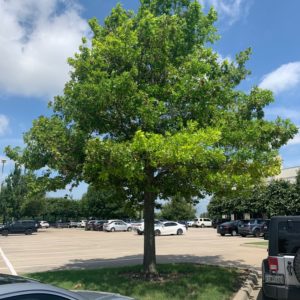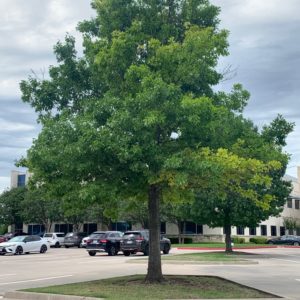Chlorosis is a highly visible deficiency in micronutrients in trees that results in lower chlorophyll levels, leading to pale green or yellow leaves. Chlorosis is typically caused by lack of available iron and manganese in the soil, micronutrients essential to tree growth. Oak trees and maple trees can be especially vulnerable to developing chlorosis. Without these vital nutrients which help with chlorophyll production, trees will eventually die. Chlorotic trees also tend to be more susceptible to various leaf diseases. We’ve found it’s simple to treat chlorosis with two different Arborjet treatments. When used together, they can help reverse the effects of chlorosis.
Mn-Jet Fe contains necessary iron and manganese, as well as potassium, copper, boron, and zinc. Injecting the solution directly into the trunk with Arborplugs helps the chlorotic tree take up nutrients, and protects it for up to three growing seasons.
Shortstop 2SC is 22.3% Paclobutrazol that suppresses above-ground vegetative growth while promoting the growth of fine root hairs. This results in a greater ability to absorb nutrients, including those much-needed micronutrients that help with chlorophyll production. Trees and shrubs treated with Shortstop 2SC not only are healthier, but look greener and better.
Progression of a treated chlorotic oak tree
A chlorotic, untreated oak tree in a Texas parking lot was first treated on 6/17/21. Like many trees confined to parking lots, it doesn’t get a lot of nutrition in the soil.
In the second picture, 1 month after treatment, and then in the third picture from 4/25/22, there is significant improvement in the tree’s color and form.
This video gets more in-depth on the oak tree shown above and the one-two punch combo of Mn-jet Fe and Shortstop 2SC. The sickly tree gets an injection of the necessary nutrients from Mn-jet Fe needed to help produce more chlorophyll, then the hormones from Shortstop help the tree get better at long-term chlorophyll production. This can be especially beneficial for trees growing in suboptimal conditions, such as those planted in parking lots or other urban environments. With a healthier tree, you can add in more soil supplements to gain further benefits. A tree that can’t produce chlorophyll won’t be able to take full advantage of nutrient supplements!
Read more about chlorosis and our solutions at https://arborjet.com/problems_solutions/chlorosis/



